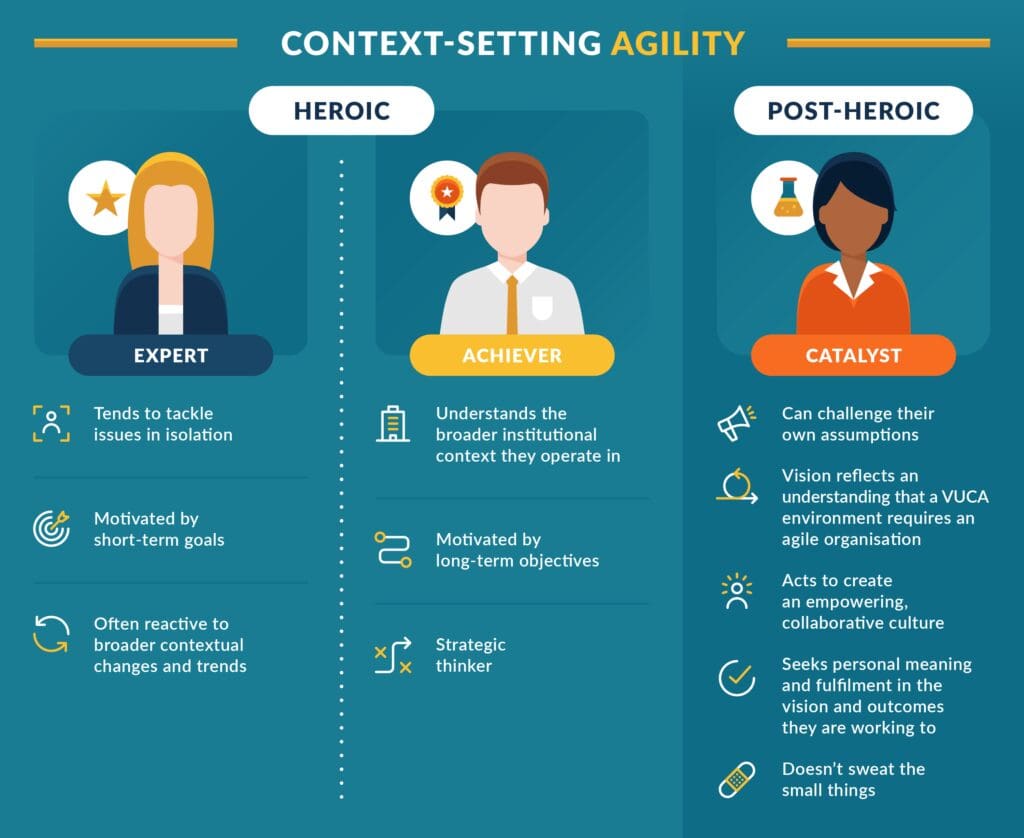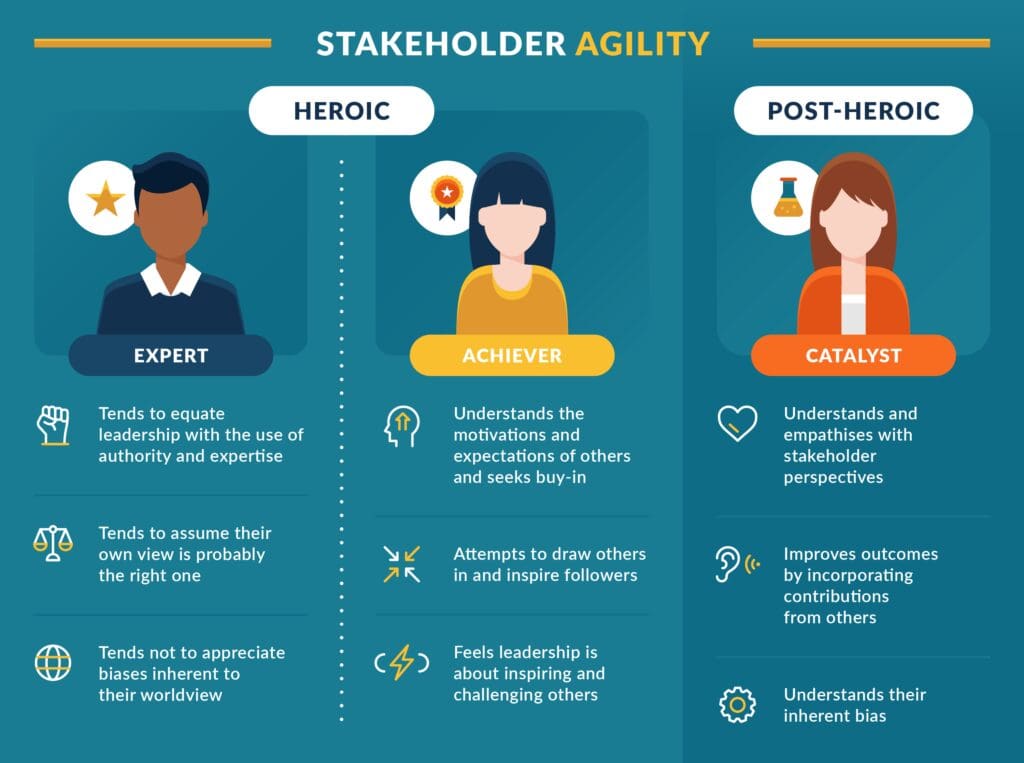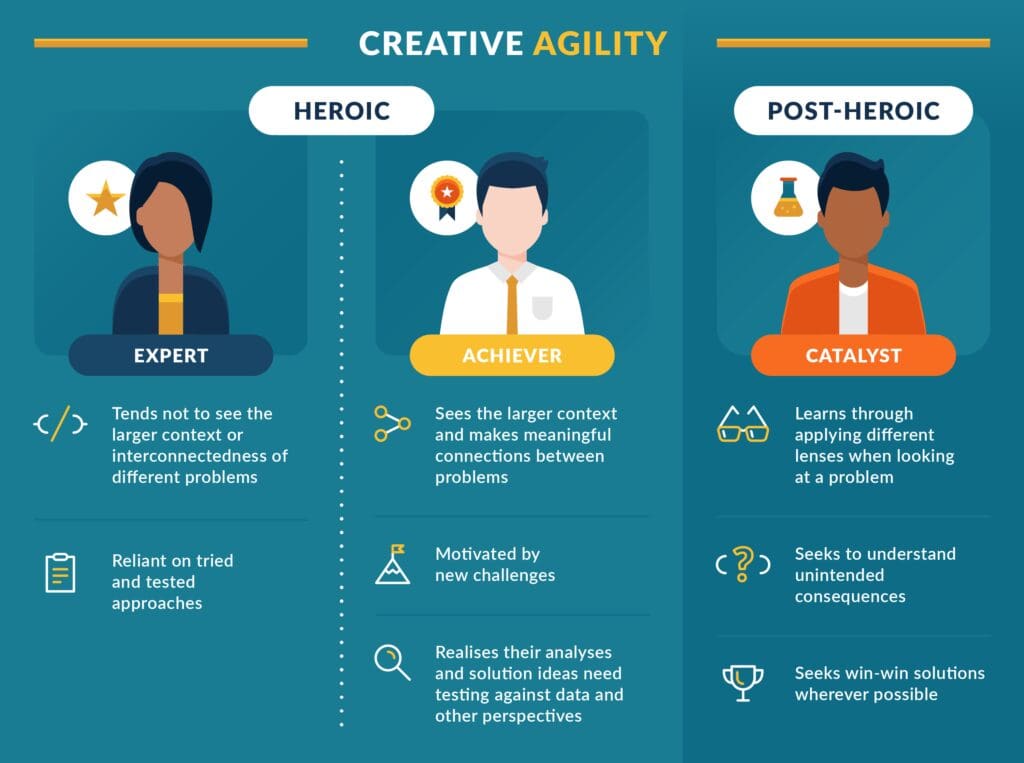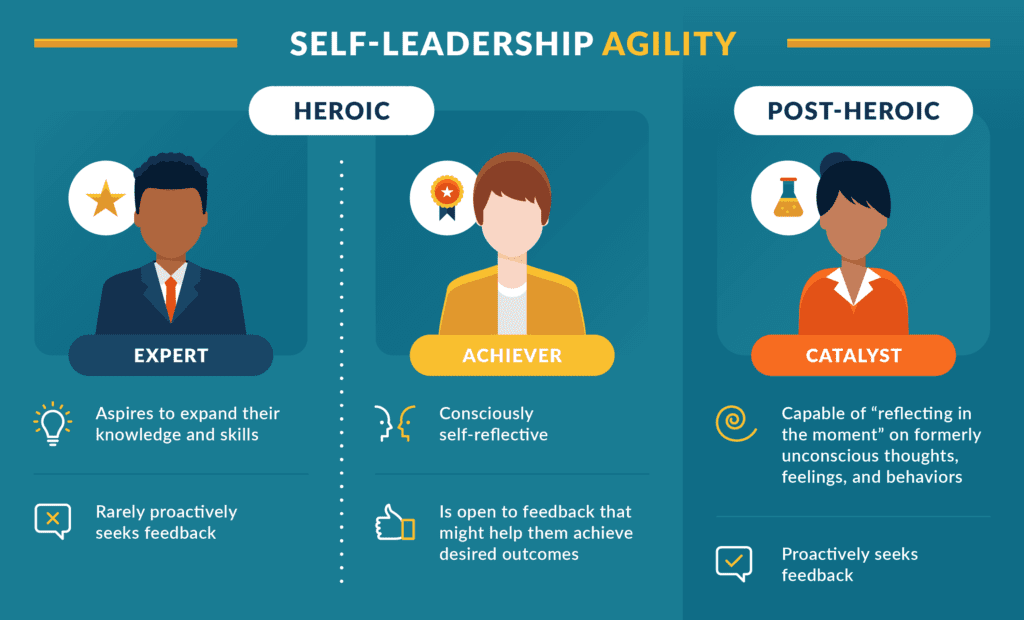Wave goodbye to heroes – why heroic leaders over-control and under-utilise their team
Involving others in decision making is a key part of agile working, enabling companies to motivate their teams to deliver the best results for their organisations. Good leaders create a supportive environment, empowering teams to make decisions while retaining accountability for the outcome of those decisions.
Our second annual State of Agile Culture report revealed an interesting leadership challenge. Despite the widespread adoption of agile ways of working in response to the Covid pandemic, leaders are now seen as less agile in their behaviours than they were previously. Our research suggested just 17% of respondents truly felt empowered to make decisions. As remote working becomes the norm across many companies, empowerment is even more fundamental to the success of virtual teams. A key priority is to strengthen leaders abilities to empower their teams.
So, what explains this disconnect? When faced with rapid change and heightened uncertainty, as we saw with the pandemic, leaders need to be able to adapt and flex their leadership style to suit. Based on ChangeWise CEO and author Bill Joiner’s five years of research, it’s understood that only about 10% of leaders demonstrate genuine agile leadership qualities. For many, the response to Covid was to default to command-and-control behaviours to act like a hero.
Heroic and Post-Heroic Leadership
In the book Leadership Agility, Joiner and Josephs provide a helpful framework for understanding leadership agility, identifying five different levels through which managers progress on the path to mastering this capability:
| Heroic | Post-Heroic |
| Expert (55% of leaders) | Catalyst (5%) |
| Achiever (35%) | Co-creator (4%) |
| Synergist (1%) |
Of these five agility levels, the first three are by far the most relevant for today’s companies.
Expert leaders rarely empower others; they assign tasks and manage direct reports on a 1:1 basis, rather than promoting teamwork and participation in decision making.
This approach might work in an immediate crisis or on a battlefield, where obedience and rapid action trumps the need for buy-in and engagement. Yet in the context of rapidly changing volatile, uncertain, complex, and ambiguous (VUCA) environments, knowledge workers that are managed in this way are vastly underutilised, discouraged from working collaboratively or taking responsibility for anything outside of their immediate remit.
Catalyst leaders, on the other hand, foster working environments in which team members feel empowered and engaged, taking responsibility not just for their own work but actively seeking to support others. These leaders retain the ultimate accountability required of their role, yet they do so without inhibiting the potential of their team.
The Four Leadership Agility Competencies
Those leaders who are most successful in VUCA environments demonstrate four distinct qualities of leadership agility, each complementing and strengthening the others.
You can see these qualities in the Leadership Agility Compass below. Understanding these attributes, and how heroic and post-heroic leaders compare across each of them, gives us valuable insight into how we can nurture and develop agile leaders.

The Leadership Agility Compass. Source: Leadership Agility: From Expert to Catalyst Bill Joiner, CEO: ChangeWise.
Context-setting Agility
Context-setting agility refers to a leader’s ability to understand their environment and decide where to focus their efforts. It includes scoping initiatives appropriately and defining desired outcomes.
Expert leaders rarely join the dots between initiatives, working on short-term tactical initiatives and goals. Achievers are strategic thinkers, using a richer understanding of organisational context to target long-term objectives. Catalyst leaders set out to develop a truly agile organisation, capable of meeting any strategic challenge that may emerge. They commit to visionary initiatives which bring fulfilment for themselves as well as their employees, while engaging with broader stakeholders.

Stakeholder Agility
Stakeholder agility involves understanding who the key stakeholders are for a given initiative and their perspective on the initiative, as well as creating greater stakeholder alignment.
Expert leaders can be judgmental toward views that differ from their own and they can fail to appreciate their biases. Because they equate leadership with the use of authority and expertise, they tend not to collaborate with people and units outside their span of control. At the Achiever level, leaders develop greater understanding of stakeholder perspectives and work to gain their buy-in.
Catalyst leaders gain a deeper level of empathy with stakeholder perspectives by seeking to understand the incentives and pressures underlying these perspectives. Beyond simply seeking buy-in, they proactively seek contributions from others, as they genuinely believe these will result in better outcomes.

Creative Agility
Creative agility refers to a leader’s ability to face complex, novel problems and tailor their approach as needed to achieve the desired results.
Experts rely heavily on their prior experience and technical or functional expertise, approaching problems as if they likely have one correct solution. Achievers are better at seeing problems in their larger context and making connections between them, realising that their problem definitions and solutions need to be tested against data and other perspectives. When leaders grow into the Catalyst level, they explore problems through different lenses, harnessing the collective ideas of multiple stakeholders and seeking win-win solutions wherever possible.

Self-leadership Agility
Self-leadership Agility refers to a leader’s capacity to clarify what kind of a leader they aspire to be. This involves identifying new leadership practices to adopt and finding daily opportunities to put these practices into action whilst seeking feedback from others.
Expert leaders are motivated to expand their knowledge and skills, whereas Achievers are consciously self-reflective and seek to improve their leadership skills to better achieve desired outcomes. Catalysts are proactive in practicing new and more effective leadership approaches. By proactively seeking feedback they are capable of becoming aware of formerly unconscious assumptions, feelings, and behaviours.

Can you move beyond Heroic Leadership?
As we have seen, Experts tend to equate leadership with using authority and expertise. They favour command-and-control behaviours over a supportive environment where employees are involved in decision-making. By failing to unite their team around a shared vision, Expert-led individuals feel over-controlled and under-utilised.
At JCURV we encourage leaders to step back and listen to the ideas of the team before making decisions or expressing their own opinion. It may take longer for a group to reach a desirable solution, yet the buy-in and quality of the decision is likely to be higher, if all perspectives have been considered.
It takes time to become this kind of leader. An important initial step is to consider delegating some decision-making authority to your team in order to empower and engage people.
Remember you don’t need to take an all-or-nothing approach to empowerment. The Management 3.0 mindset defines seven levels of delegation. If you’re not comfortable with complete delegation, try to identify decisions you would normally make without group discussion or input that might benefit from a more participative approach.
Armed with these principles of participation and empowerment, leaders can move towards post-heroic leadership. As a result, the organisation will benefit from improved decision-making that considers the perspectives of those who are closest to the action.
At JCURV, we have supported many organisations in making this important cultural shift and witnessed the impressive results such transitions have delivered.
